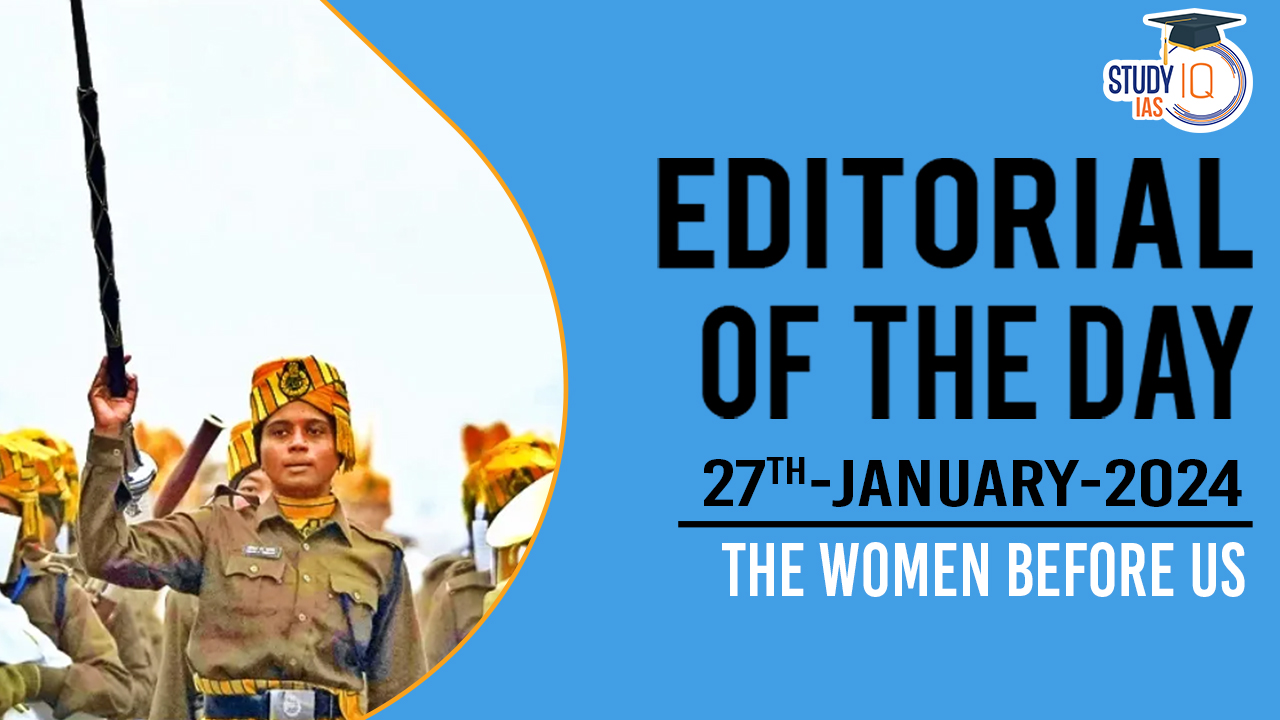Table of Contents
Context: The 75th Republic Day of India is a moment to celebrate the nation’s progress and honour the pivotal roles played by many, including the often overlooked contributions of pre-independence feminist movements, in shaping our democracy.
Timeline of Early Women’s Suffrage Movement in India
- 1917: A delegation of women activists presents a memorandum of demands for women’s enfranchisement to Montagu and Lord Chelmsford, marking one of the first official calls for women’s voting rights in India.
- Formation of the Women’s Indian Association (WIA), the first national body advocating for female suffrage, addressing socio-economic challenges faced by women.
- 1918: WIA members and other activists travel to Britain to seek support for their cause.
- 1919: Sarojini Naidu champions women’s rights within the Congress party, proposing resolutions for women’s enfranchisement at the Congress sessions in Bijapur and Bombay.
- The Government of India Act is enacted, allowing provincial legislatures the discretion to enfranchise women, marking the first legal victory for women’s suffrage.
- 1921: Madras province pioneers in granting women the right to vote, setting a precedent followed by Bombay and the United Provinces.
- 1925: After a failed initial attempt and a four-year-long intensive campaign led by the Bangiya Nari Samaj in Bengal, the enfranchisement Bill is finally passed in the Bengal Legislative Council.
Despite these victories, the right to vote came with conditions related to property ownership, income, and other status criteria, excluding many women. Additionally, women were still not permitted to serve in legislative bodies.
- 1927: Formation of the All India Women’s Conference (AIWC) by various women-led organisations uniting to address women’s issues.
- Initial Focus: The AIWC begins with a concentration on promoting women’s education and subsequently advocates for significant social reforms including the prohibition of child marriage, elevation of the age of consent, and the ban on polygamy.
- Belief: AIWC holds the conviction that true women’s liberation is unattainable without the reformation of the diverse religious laws governing personal life.
- 1945-46: Adoption of the Indian Woman’s Charter of Rights and Duties by AIWC, calling for gender equality across all domains of life.
- Empowerment and Recognition: The Charter places a strong emphasis on women’s economic empowerment and stresses the importance of formally acknowledging the contribution of domestic work.
- Advocacy for Comprehensive Legal Reforms: It champions thorough amendments to the personal legal codes, advocating for rights such as divorce, as well as equal property and inheritance rights. Many of these proposals later influenced the Hindu Code Bill, leading to legislative changes in the following decade.
We’re now on WhatsApp. Click to Join
Timeline of Advancements in Women’s Civic Rights in India
- 1929: The Nehru Report, devised by an All Parties Conference, advocates for equal civic rights for all citizens within a draft Constitution, despite British resistance to expanding such rights.
- To garner global backing, Rajkumari Amrit Kaur and Shareefa Hamid Ali lead a delegation to London and Geneva, appealing to the League of Nations for support in their cause.
- 1935: The Government of India Act 1935 significantly broadens the voting rights and opens avenues for women to hold public office, marking a substantial achievement in the women’s rights movement.
- 1936-37 Elections: Following these legislative changes, numerous women ran in the elections, successfully entering provincial governments. This period saw women leaders fostering widespread endorsement for the concept of universal adult suffrage.
Reservations & Religion: Balancing Equality and Identity.
- The division of seats based on religious lines emerged as a contentious issue following the Partition.
- In the Constituent Assembly, significant figures like Rajkumari Amrit Kaur and Begum Qudsia Aizaz Rasul strongly advocated for the elimination of special privileges based on religion.
- The decision was ultimately made to limit reservations to the Scheduled Castes and Tribes only.
- The AIWC stood firmly against separate electorates and reservations, including those for women, arguing that such measures exacerbated communal divides.
- These debates highlighted internal disagreements within the AIWC, showcasing the varied perspectives present in the women’s movement.


 Operation Baam: Baloch Separatist Group ...
Operation Baam: Baloch Separatist Group ...
 National Register of Indian Citizens (NR...
National Register of Indian Citizens (NR...
 World Population Day 2025, Themes, Histo...
World Population Day 2025, Themes, Histo...





















